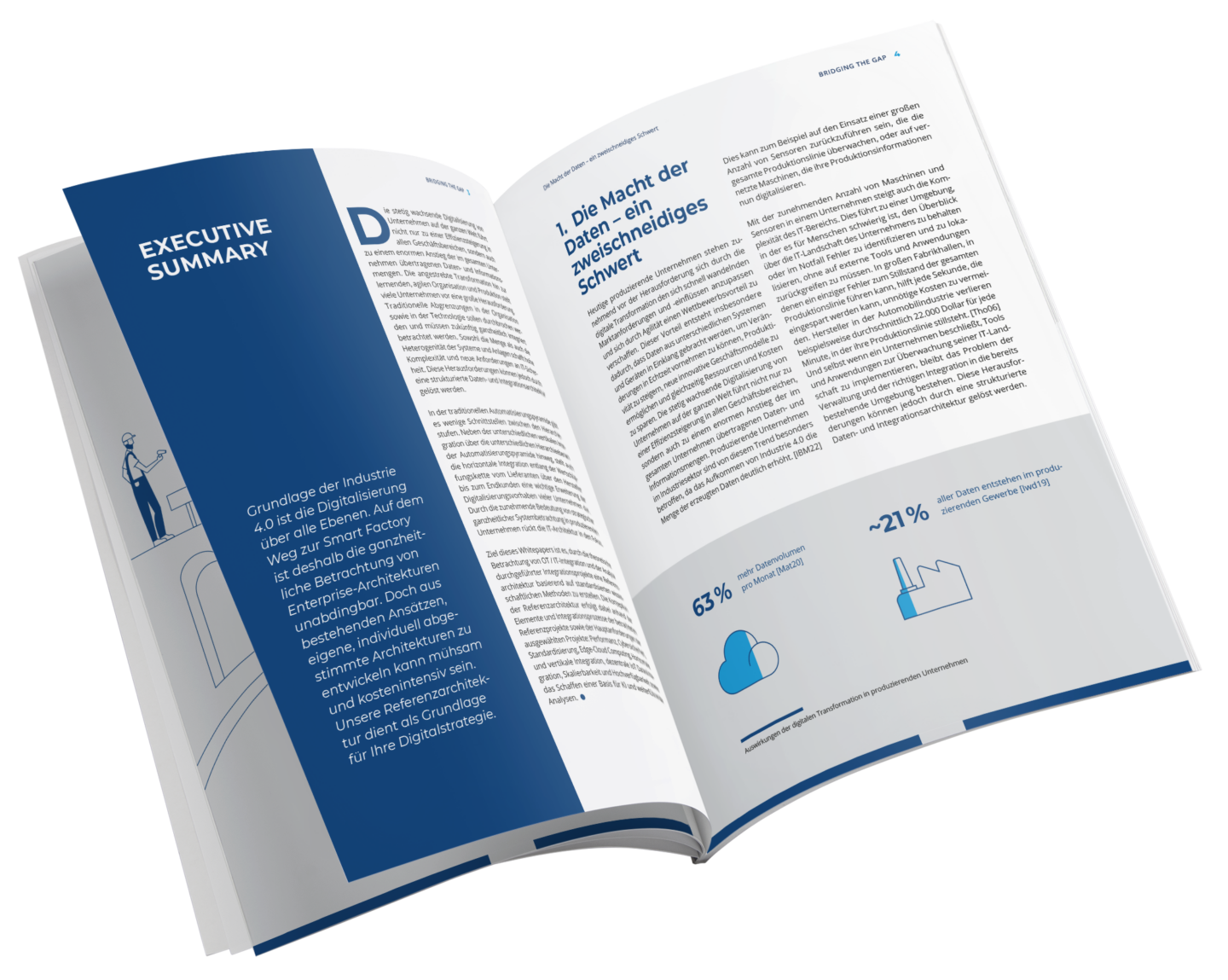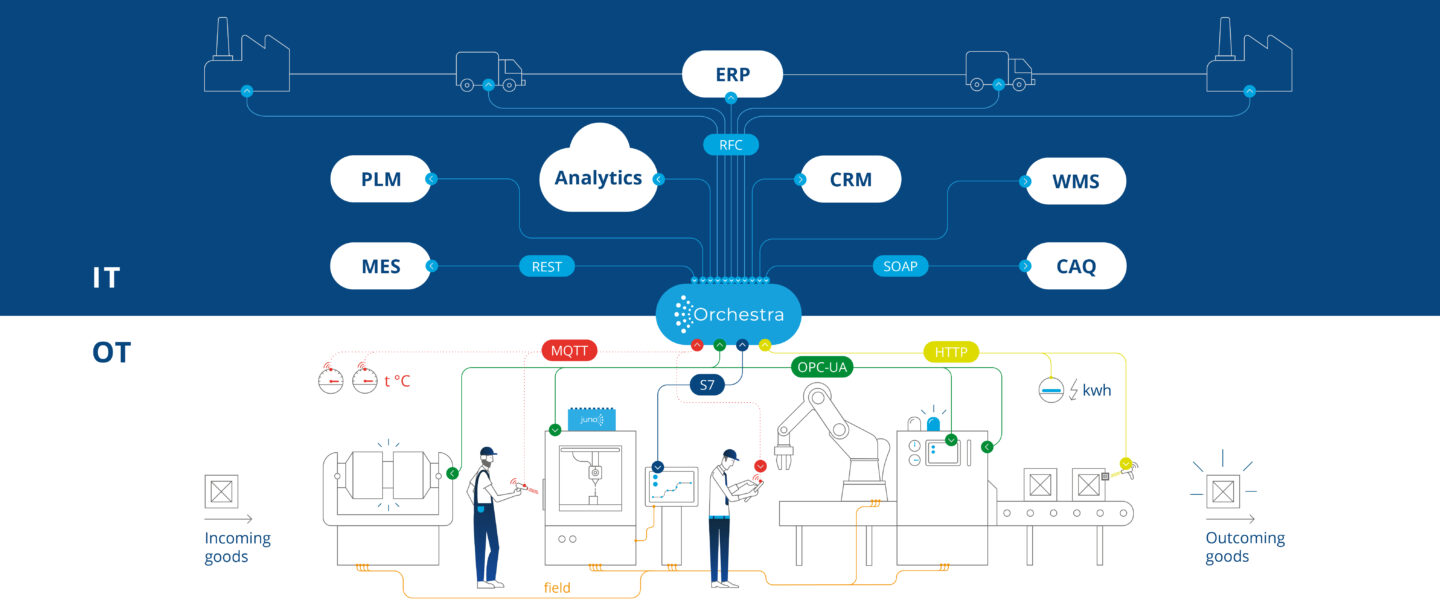Data Architecture
With Data Architecture to Industry 4.0

With Orchestra to more Connectivity and Transparency
Whether for a Digital Twin, Condition Monitoring or IT/OT Convergence: A data architecture is the basic prerequisite for pretty much every use case and solution in modern production. Data Architecture paves the way to the Smart Factory and opens up the possibilities of the Internet of Things (IoT) and Industry 4.0. But how does it work?
What is Data architecture?
Characteristics of a good data architecture
A modern, hybrid and long-term efficient data architecture should bring numerous features and capabilities:
- Simple, elastic & scalable
- End-to-End security
- Seamless data integration
- Real-time data
- AI-driven & automated
- User-driven
It can be stated: Data must no longer have to be requested only in a roundabout way via IT. Data is a common good, users must be given appropriate access to data, data flows must be designed to be comprehensible and agile, and of course they must always be secure.

Prerequisites & Perspectives: With Data Architecture to the Smart Factory
Software integration is essential for the implementation of a suitable data architecture. Since data architectures should remain in place for a long time, adaptability is also particularly important
With Orchestra you convert expensive data into profitable information and solve the problem of direct translation through efficiently designed interfaces. With our service bus functionality, information from all data sources can be published, subscribed to.
The Orchestra middleware then makes it possible to implement any use case on the existing data architecture, regardless of the provider, and thus to upgrade one’s own production to a smart factory.

Why effective Data Architecture is essential.
For work across departmental boundaries, it is important to link data between different expert systems – both in IT and OT. With efficient architectures for data exchange and information retrieval, you create the best conditions for getting everything out of your production.
In the long term, numerous opportunities and benefits arise from data architecture, such as:
Creating Big Data architectures – with Orchestra Industrial Suite
We design the right data architecture according to our customers’ requirements and implement it based on Orchestra Industrial Suite. Not only are our experienced experts at your side every step of the way, you also benefit from years of experience in software integration. We don’t just offer you a product, but accompany you in workshops all the way to implementation to the finish line.

Orchestra enables Industry 4.0
At the same time, you always enjoy the benefits of software implementation with soffico in each of our IoT use cases:
- Application diversity: Horizontal and vertical integration of various in-house applications as well as external partners along the complete value chain.
- Edge architecture: Autonomous, decentralized systems as well as an optimal integration architecture through a hybrid processing model.
- Future-proofing: Less dependence on individual manufacturers or technologies.
… as well as all the other advantages that
Orchestra offers your production:
Future proofing
Data security
Transparency & data sovereignty
Investment protection
Stability & Reliability
Edge-Architecture
Sarah Blomeier
